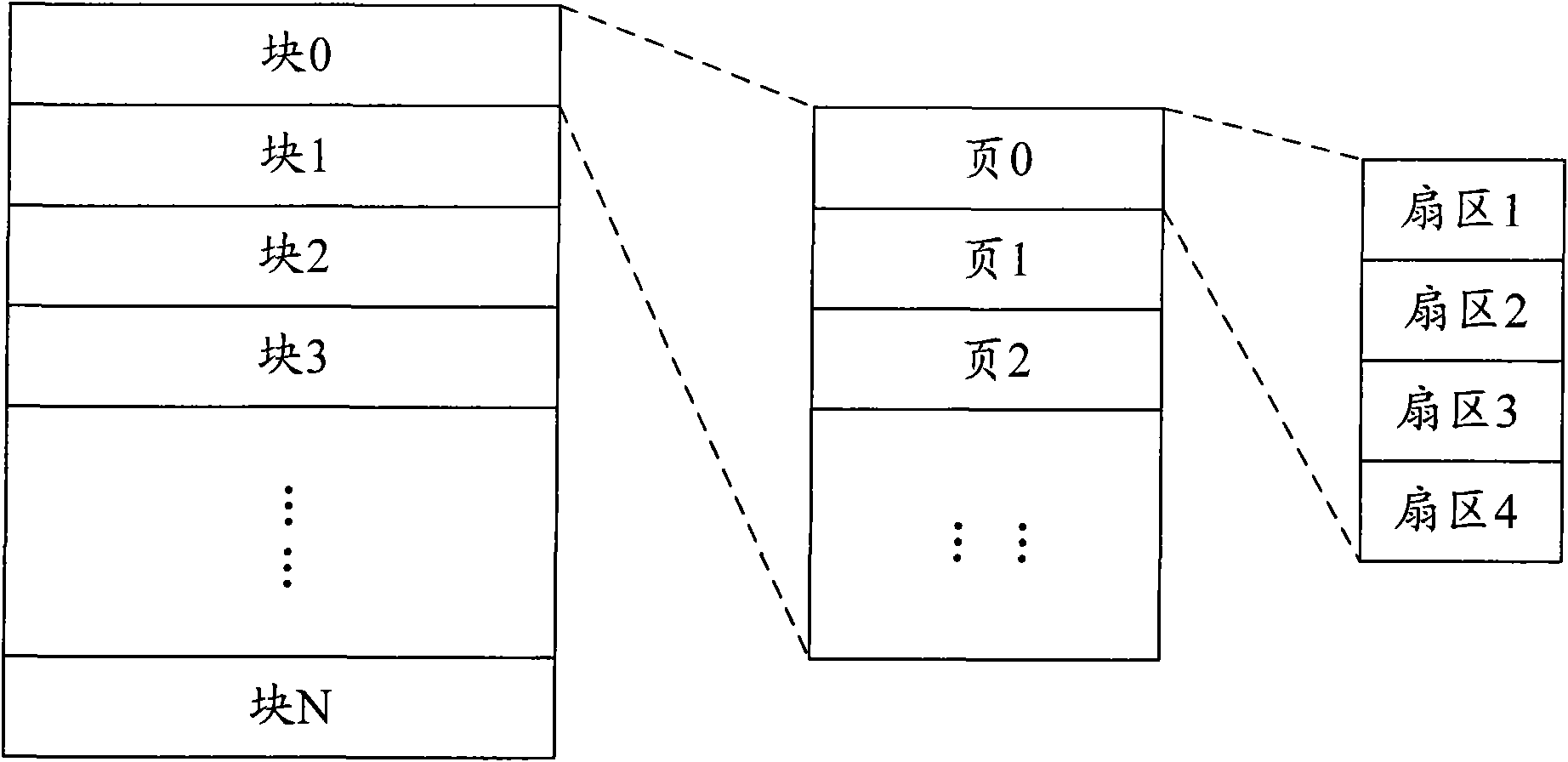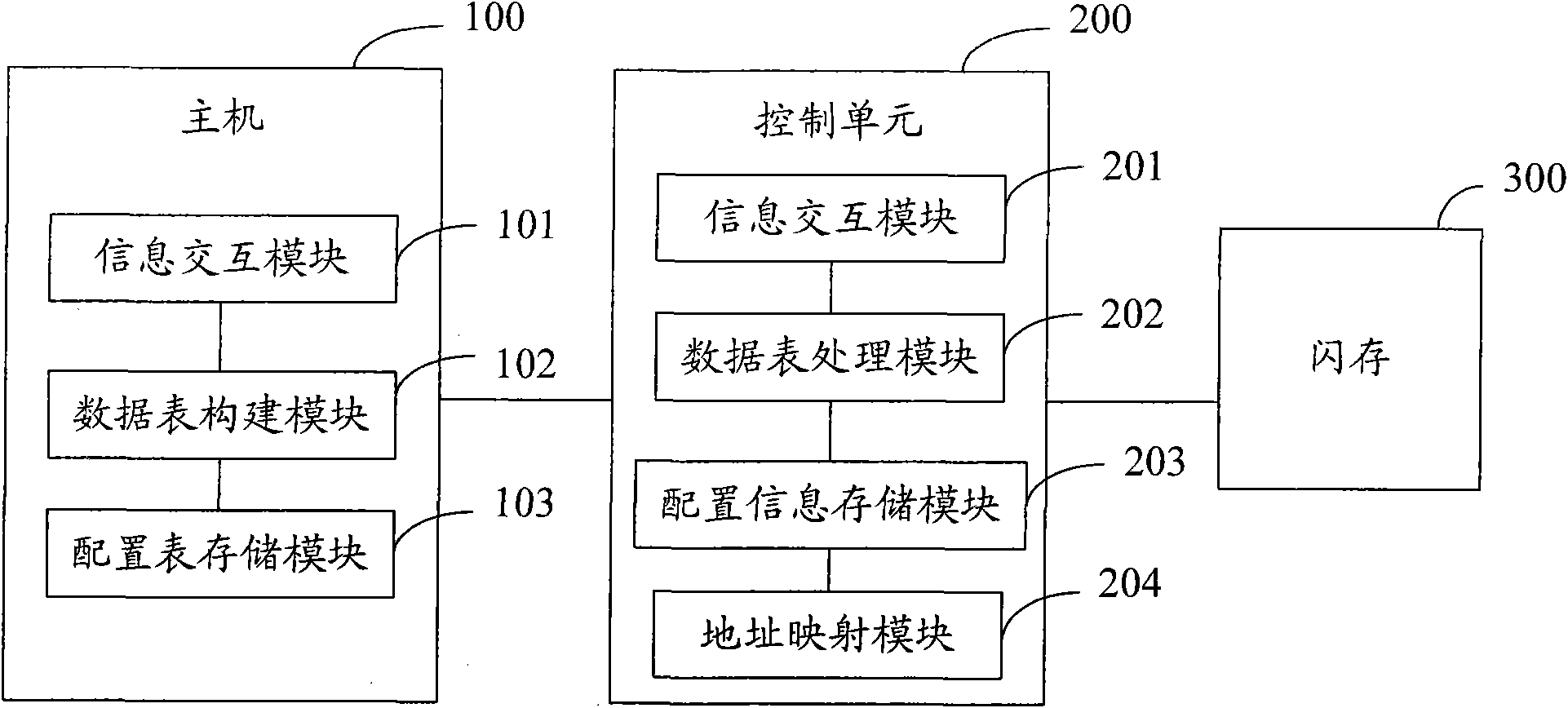Flash memory equipment, method and system for managing flash memory
A flash memory management and flash memory technology, applied in the field of semiconductor storage media, can solve the problem of low available capacity of flash memory, and achieve the effect of increasing the available capacity
- Summary
- Abstract
- Description
- Claims
- Application Information
AI Technical Summary
Problems solved by technology
Method used
Image
Examples
Embodiment Construction
[0037] In the present invention, by extracting the good blocks bound with the bad blocks in the physical block binding table, a fragmented block recording table is established, and accessing the good blocks bound with the bad blocks is realized, thereby increasing the available capacity of the flash memory.
[0038] figure 2 The structure of the flash memory management system in one embodiment of the present invention is shown, and the system includes a host 100 , a control unit 200 and a flash memory 300 . It should be noted that the connection relationship between the various devices in all the diagrams of the present invention is to clearly illustrate the needs of their information interaction and control process, so it should be regarded as a logical connection relationship rather than limited to physical connection. In addition, it should be noted that there can be various communication modes among the functional modules, and the protection scope of the present invention...
PUM
 Login to View More
Login to View More Abstract
Description
Claims
Application Information
 Login to View More
Login to View More - R&D
- Intellectual Property
- Life Sciences
- Materials
- Tech Scout
- Unparalleled Data Quality
- Higher Quality Content
- 60% Fewer Hallucinations
Browse by: Latest US Patents, China's latest patents, Technical Efficacy Thesaurus, Application Domain, Technology Topic, Popular Technical Reports.
© 2025 PatSnap. All rights reserved.Legal|Privacy policy|Modern Slavery Act Transparency Statement|Sitemap|About US| Contact US: help@patsnap.com



